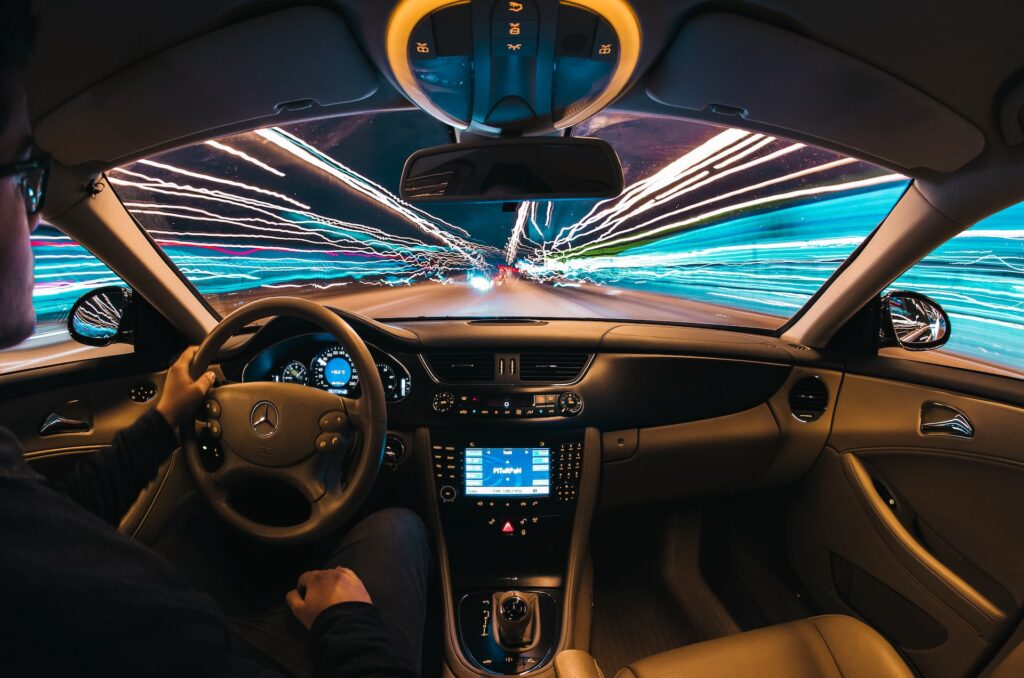Remote driving can have many different uses. BMW, for example, has a feature on some of its models that allows the driver to reverse their car out of a parking space using the key as a remote control. More comprehensive remote driving systems are also being used in mining and agriculture. But how does the existing legal framework apply to remote driving on roads shared with other road users?
To find answers, the law Commission published a 93-page Issues Paper highlighting uncertainties and risks in the way current legislation applies to remote driving, and seeking views on new regulations in both the short and long term to address these challenges. These views will be collected over the coming months and fed into a report for the Government either late this year or early next year.
The current position
Perhaps surprisingly, there is nothing within the current road traffic laws of England and Wales that specifically requires a driver to be in the car or that expressly prevents someone from “driving” a car remotely on the road. But there are, as the Issues Paper notes, several potential legislative pitfalls that a remote driver would face. For example, there is a rule [1] that prohibits a driver from being in a position to see a screen which is displaying non-driving related information. This arguably applies to driving via a computer screen that also gives text message notifications, for example. In addition, there are well known regulations [2] that prevent the use of mobile phones and other hand-held devices, which would prevent a driver from controlling their car on the open road with their phone.
Other questions raised include whether remote driving allows the driver a “full view of the road and traffic ahead” [3] or if the driver leaves the vehicle “unattended” [4]. These are difficult questions. Potentially, existing legal mechanisms could absolve a remote driver from breaching the current regulations but in short, the Issues Paper suggests that the current road traffic laws are not sufficient to regulate the use of modern remote driving technology, given the rate of change we are seeing in this area.
What are the biggest concerns with remote driving?
Aside from the issues concerning the legality of remote driving, the Law Commission identified further problems that remote driving on public roads could bring. They have divided these into three categories:
1. Civil Liability
A driver in a car is typically responsible for the control of the vehicle but the additional “moving parts” of remote driving – such as software, internet connection, and electronic screens – causes the Law Commission concern that establishing who is to blame in an accident would be more complex. For example, if a car being driven remotely were to lose connection and cause an accident, would the provider of the internet connection or the remote driver be to blame? If the driver is employed by a remote taxi service, should it be the taxi service who picks up the bill? Ultimately, the Law Commission is anxious that added complexity in the claims process will affect the injured party’s ability to gain compensation quickly (if at all).
2. Safety
The Law Commission also raises safety challenges that come with remote driving. Again, the reliability of connection to the vehicle could affect safety, especially in rural locations. The situational awareness of the driver, who wouldn’t feel acceleration or braking, could be distorted. In addition, the cybersecurity of an internet-based remote driving system could be compromised and exploited by criminals. The most vivid example the Law Commission provides is that of a terrorist organisation intercepting the connection to a remote vehicle and using the vehicle for an attack.
3. Jurisdiction
As the adoption of meetings over video conferencing software has shown us during the pandemic, an internet-based service is relatively unbound by geographical restrictions. Similarly, a car could be remotely driven in London from Sydney as easily as it could be driven from Reading. The Law Commission is concerned that, in the event of an accident, enforcing criminal charges or civil liability in other jurisdictions would be difficult.
Reforms?
The Issues Paper discusses the approach of other countries, including from the USA, Germany, Japan, and Australia, which have differing levels of acceptance of remote driving – from Japan who only allow it in emergency situations, to Louisiana, which has a much more progressive legislative approach. The Law Commission has tentatively suggested the following options for reform:
- In the short term, the Secretary of State could use his or her powers under the Road Traffic Act 1988 to issue exemptions to the current regulations. Guidance on how to interpret the current rules could also be added into the Highway Code, which would not require Parliament to pass new legislation.
- In the longer term, it suggests a new regulator should be responsible for maintaining the safety of remote driving and the licensing of remote drivers (possibly through an additional remote driving test). The Issues Paper makes a distinction between remote driving where the driver has a direct the line of sight to the vehicle – such as the BMW parking system mentioned above – and remote driving outside of the line of sight, e.g., operating the car via live feed cameras. The Law Commission suggests that remote drivers within the line of sight would not require an additional license, and this kind of remote driving should be regarded as an extension of “traditional” driving. Finally, it recommends new primary legislation be passed to clarify and update the current legislative framework in the UK under the basic premise that the responsibility for the car should remain solely with the remote driver.
Conclusion
The Issues Paper is a “call to arms” for experts and stakeholders to give their input, so it’s too early for any hard conclusions at this stage but it will be interesting to see what the Law Commission presents to the Government later as the process moves forward. Nevertheless, an overhaul of existing legislation will be required before any of us hail a taxi being driven from anywhere but the driver’s seat.
[1] Within Regulation 109 of the Road Vehicles (Construction and Use) Regulations 1986 (the “1986 Regulations”).
[2] Regulation 110 of the 1986 Regulations
[3] Regulation 104 of the 1986 Regulations.
[4] Regulation 107 of the 1986 Regulations.




